Indians
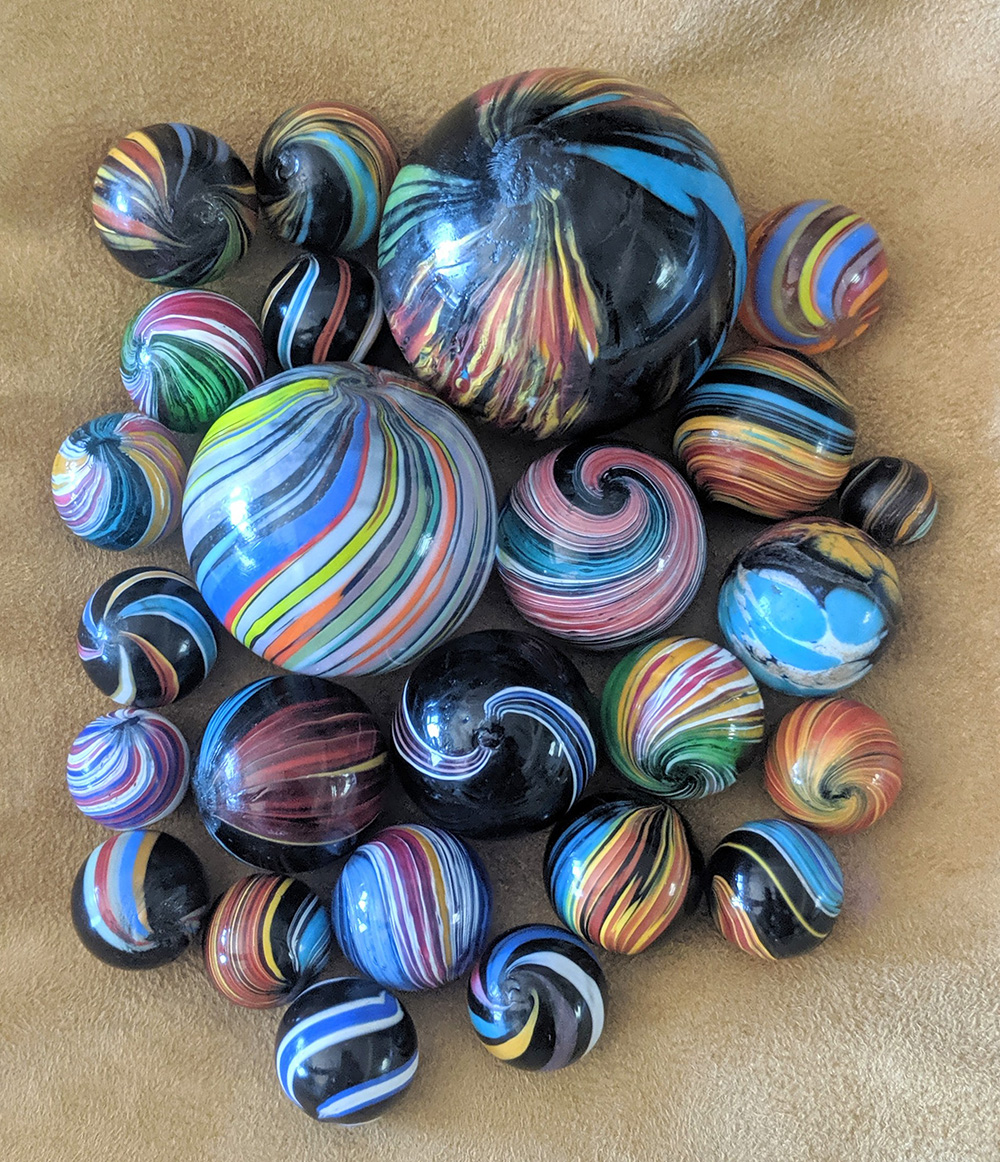
Indian swirls are early German handmade marbles (many with a faceted pontil, indicating manufacture before 1880) and are made of soft black opaque glass with surface bands of color, commonly multiple colors. Many earth and sky tone colors were used, such as yellow, orange, green and blue.
Inidans will never be cased with clear glass. The colored lines on the marble will be surface lines.
Indians are made with lightweight and very brittle black opaque glass that chips or cracks easily. Due to their light weight and lack of durability with play, they did not find favor among the early marble players, and slow sales dictated low production, thus scarcity among collectors.
Some Indians have a haphazard random banding pattern, and others are made with precision banding with a set pattern of color or organized bands (usually 2 opposed bands).
Some collectors prefer precision band Indians while others favor a random design. It is a personal preference, and there doesn’t seem to be much difference between the two in value.
Rarely will Indians be made of a different base matrix color other than black but it is sometimes seen. Marbles of other matrix colors would typically be considered banded opaques. Uncommon matrix colors for Indians include clear, opaque blue, or blue, purple, green, or red maglight (meaning it looks black until you shine a light through it to reveal the color).
Most common sizes are 9/16-7/8”. Peewees of ½” or less would demand a premium. Any Indian over 7/8” would also generate a premium. Indians are rarely found 1” or larger.
There are several RARE types of Indians:
- Precision Banded Indians with multiple bands are less common and can approach “rare” status depending on the quantity and quality of construction.
- 360 Indians have complete coverage of surface color – 360 degrees around the marble. If there is a gap in color allowing the black matrix glass to show it would not be truly a 360, but would still carry a premium. 360 Indians are worth about 4x that of an average Indian swirl. Most have a black opaque matrix, but some have been found with transparent bases of green, blue or clear, or maglight purple.
- Submarine Indians are made of transparent colored glass of usually apple green, cobalt, cyan blue, or purple, sometimes clear, but are identified by 2 opposing SURFACE Indian bands of reds, yellows, whites, oranges, and/or blues laid down in a nondescript pattern like most Indians, and between those bands are submerged (submarine) bands of stringy white.
Quite a rare and visually striking pattern!
Rare Indian varieties are rare in all sizes, but become increasingly rare based on size parameters listed above for the typical Indians.
End-of-Cane or left twist examples of Indians of any type are rare!
Showing 1–12 of 26 results
-
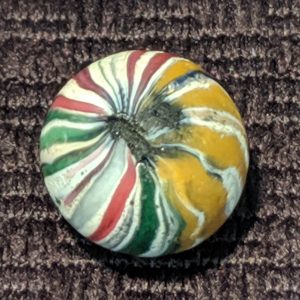 SOLD OUT
SOLD OUTSweet 360-Degree Indian
$285.00 Size: 9/16"
Condition: Mint
Grade: 9.6 -
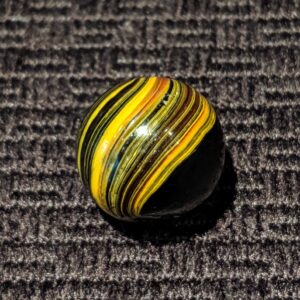
Banded Indian Swirl
$70.00 Size: 9/16"
Condition: Mint
Grade: 9.6 -
Sale!
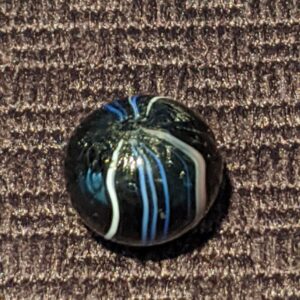 SOLD OUT
SOLD OUTPeewee Indian
Original price was: $75.00.$50.00Current price is: $50.00. Size: 1/2"-
Condition: Mint
Grade: 9.7 -
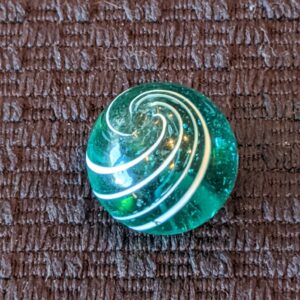
Aqua Banded Swirl
$140.00 Size: 13/16"
Condition: WET MINT-
Grade: 9.5 -
 SOLD OUT
SOLD OUT7/16″ Banded Indian Swirl – Micro Peewee
$75.00 Size: 7/16"
Condition: Wet Mint
Grade: 9.9 -
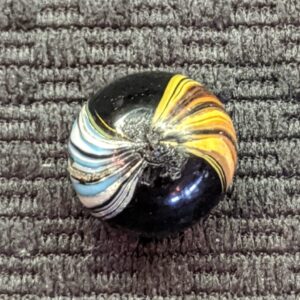
Indian with Matte Orange-Red & Baby Blue Bands
$75.00 Size: 21/32"
Condition: Mint
Grade: 9.7 -
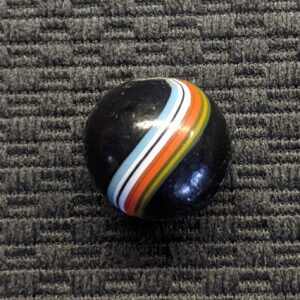 SOLD OUT
SOLD OUT13/16″ Wet Mint Very Colorful Banded Indian
$225.00 Size: 13/16"
Condition: Wet Mint
Grade: 9.9 -
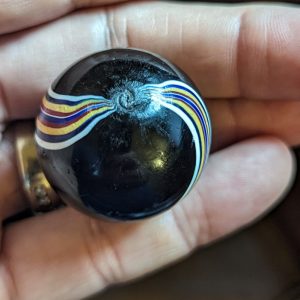 SOLD OUT
SOLD OUT1-5/16″ Large Beautiful & Rare Colorful Precision Banded Indian Swirl
$650.00 Size: 1-5/16"
Condition: WET MINT-
Grade: 9.4 -
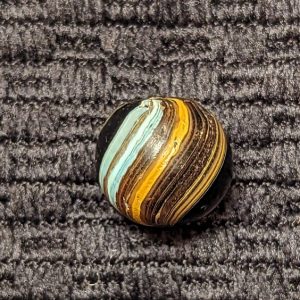 SOLD OUT
SOLD OUTPeewee Indian Under 1/2″ with 80% Coverage
$125.00 Size: 1/2"-
Condition: Mint
Grade: 9.5 -
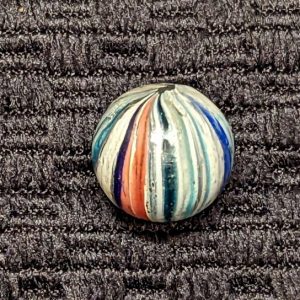 SOLD OUT
SOLD OUTRare 360 Indian w/ Clear Base -Just Barely Over 1/2″
$210.00 Size: 1/2"+
Condition: Wet Mint
Grade: 9.9 -
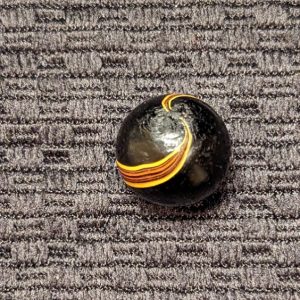
Banded Indian with Opposed Identical Red/Yellow Stylized Bands
$55.00 Size: 11/16"
Condition: Mint Minus
Grade: 9.3 -
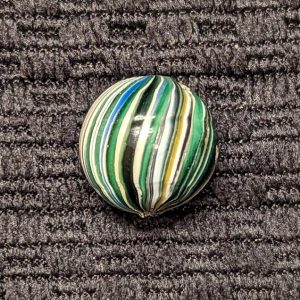
Rare 360 Indian Swirl
$200.00 Size: 19/32"
Condition: Mint
Grade: 9.7